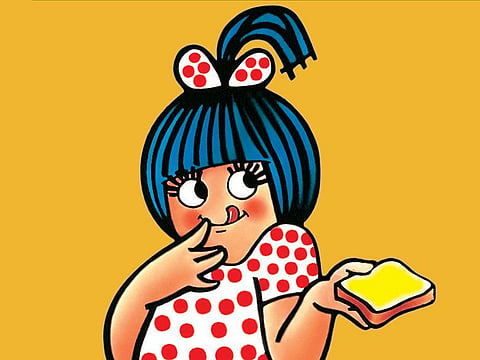Story of Amul is also the story of independent India. Here is why
Often called the 'taste of India', the popular brand has deep connection with Sardar Patel

This Sunday morning, on the eve of the weeklong Diwali festivities, the bell rang before 7:00am. I wondered who it could be. When I went to check, I found that it was the early delivery of milk at our doorstep.
The luxury to return to organic cow’s milk in aluminium capped glass bottles sourced from bespoke manufacturers is a throwback to bygone days. But, then, only the rich could afford plentiful and unadulterated milk, sourced directly from dairies and farmers.
The rest faced decades of milk droughts and shortages. In the 1970s, milk became so scarce in some states of India that there were ordinances against its sale to manufacturers of sweets and paneer (Indian cottage cheese).
Raiding parties were launched by the police and law enforcement agencies, not to catch contraband liquor or drugs, but seize undeclared and clandestine supplies of milk — lest households with children ended up deprived of this vital and nutritious food. Today, we take not only milk, but a variety of its products, from traditional sweets to cheese and chocolate, quite for granted in India.
What would Dussera or Diwali be without the hundreds of varieties of our favourite milky sweets — kheer, peda, barfi, sandesh, rasagulla, ras malai, and so on? But there was a time when India could scarcely afford these because milk was in such short supply.
All that changed with “Operation Flood,” the nationwide programme to enhance the production and supply of milk. It was spearheaded by National Dairy Development Board (NDDB). NDDB was mandated to replicate Amul’s success in other parts of India.
That is why Amul’s story deserves to be remembered. Especially because it recently celebrated its 75th anniversary, quite in line with India’s own semisesquicentennial jubilee. In many ways, the story of Amul, is also the story of independent India.
Founded on Dec. 14, 1946, Kaira District Co-operative Milk Producers’ Union, more popularly known as Amul, was also the brain child of “Sardar” Vallabhbhai Patel (1875-1950). This is one of the lessor-known achievements of India’s “iron man,” in whose memory a grateful republic observes “National Unity Day” on Oct. 31, his birthday.
Patel accomplished the largely bloodless amalgamation of some 555 princely states into the Indian union after independence. This was nothing short of a diplomatic and political miracle, given how diverse in size, importance, wealth, geography, culture, and language these states were.
India’s current prime minister, Narendra Modi, who also instituted National Unity Day, takes the credit for rescuing Patel from oblivion. Though one of the tallest Congress leaders, Patel’s legacy was all but forgotten and marginalised by his own party, dominated as it still is by the Nehru-Gandhi family.
With great political astuteness, not devoid of an irony peculiar to Indian politics, Modi appropriated Patel’s legacy for the BJP, Congress’ arch-rival. He did this by building the world’s highest statue in the likeness of Patel at Kevadia, Gujarat, the state both Patel and he hail from.
Born in Kaira (or Kheda) district to a farming family, Patel’s first major fight against the British colonial administration was also in this district. Known as the Kheda satyagraha (non-violent civil disobedience) of 1918, Patel led the farmers in their refusal to pay taxes after a terrible drought.
Just before independence, Patel found out how monopolistic capitalists were exploiting dairy farmers in his own district. He charged one of his lieutenants, Tribhuvan Patel, also a Congressman and Gandhian, to start a milk cooperative.
Tribhuvan “Kaka” (uncle) called a meeting of the elders. The biggest hurdle was capital. Who would lend to a new cooperative, that too one which undertook to collect milk directly from farmers and then resell it in nearby towns and cities at minimum profit? And without ready money, who would supply milk to the cooperative in the first place? Kaka, as the legend goes, pledged his own wife’s jewellery as collateral. The fledgling cooperative’s initial procurement was just 250 litres of milk.
Later, Kurien a young engineer-returnee from the University of Michigan in the US, decided to serve his one-year service bond in lieu of his educational fellowship at Amul. He never left.
In 1955, he was aided by Harichand Megha Dalaya, a refugee from Karachi, Pakistan, who lost his family’s dairy business to the Partition. Dalaya defied all odds in 1955 to pioneer a process that could convert the much higher-fat buffalo milk into milk powder.
The rest, as they say, is history
After “Operation Flood,” India was able to scale up milk production by importing surplus milk powder from countries that were practically dumping their excess supplies in the ocean. Reconstituting it in the summer months of scarcity by adding butteroil, milk at reasonable prices, was sold through many state milk cooperatives.
Jointly owned by over 3.5 million milk producers of Gujarat, Amul now sells its products worldwide. Its annual revenues top a staggering Rs6 billion a year. It procures some 29 million litres of milk. It’s plump polka dot mascot with her bob cut is easily recognisable as is its tagline “utterly butterly Amul” — the taste of India.
Today India is one of the world’s largest milk producers and consumers and Amul is its largest food enterprise. We owe this, at least partly, to the initial impetus of Sardar Vallabhbhai Patel.
The success story with milk can be multiplied in agribusiness if similar hurdles of profiteering, hoarding, middlemen, and negative politics in the farm sector can be overcome. Solving the crisis over the farm bills would be the first step.
Sign up for the Daily Briefing
Get the latest news and updates straight to your inbox








